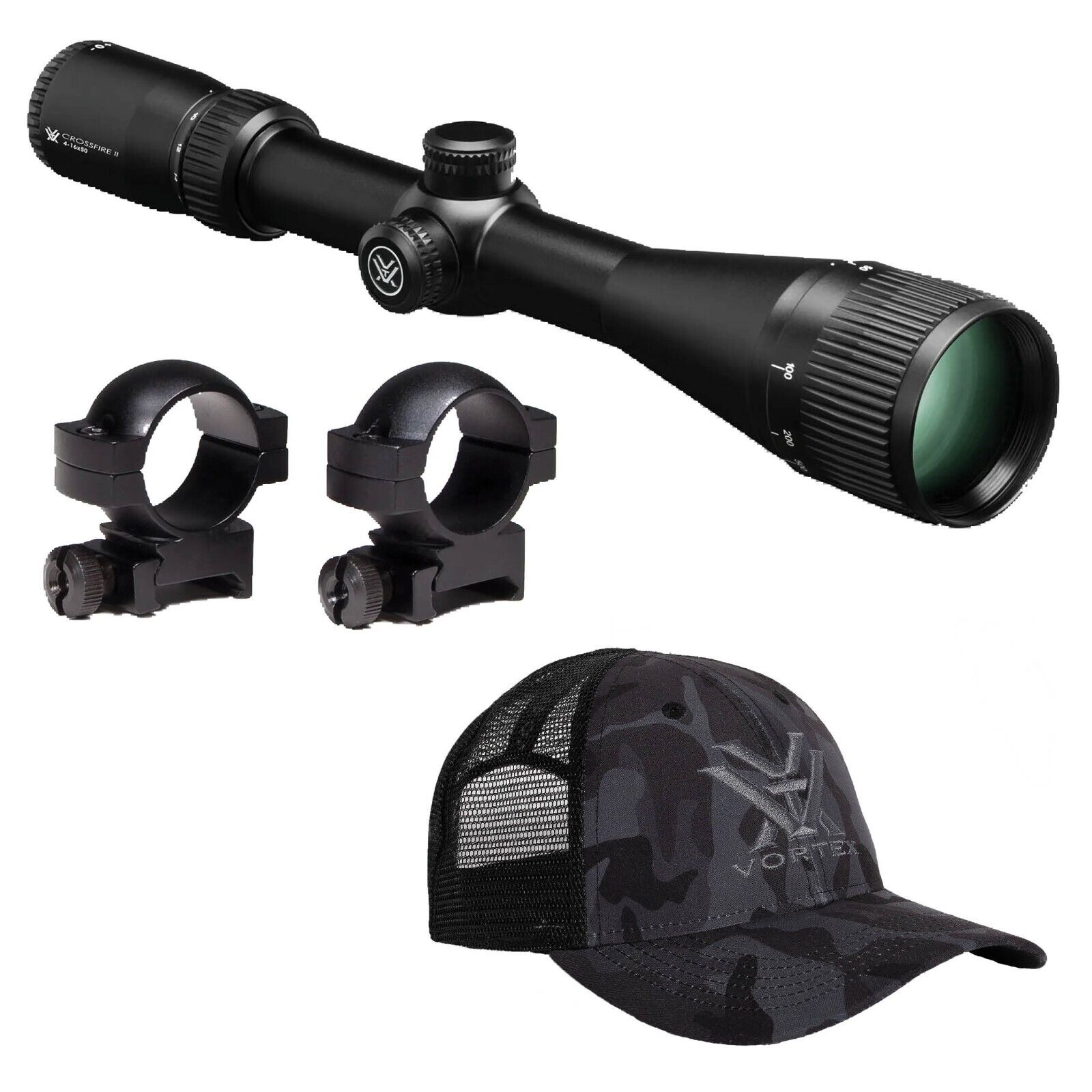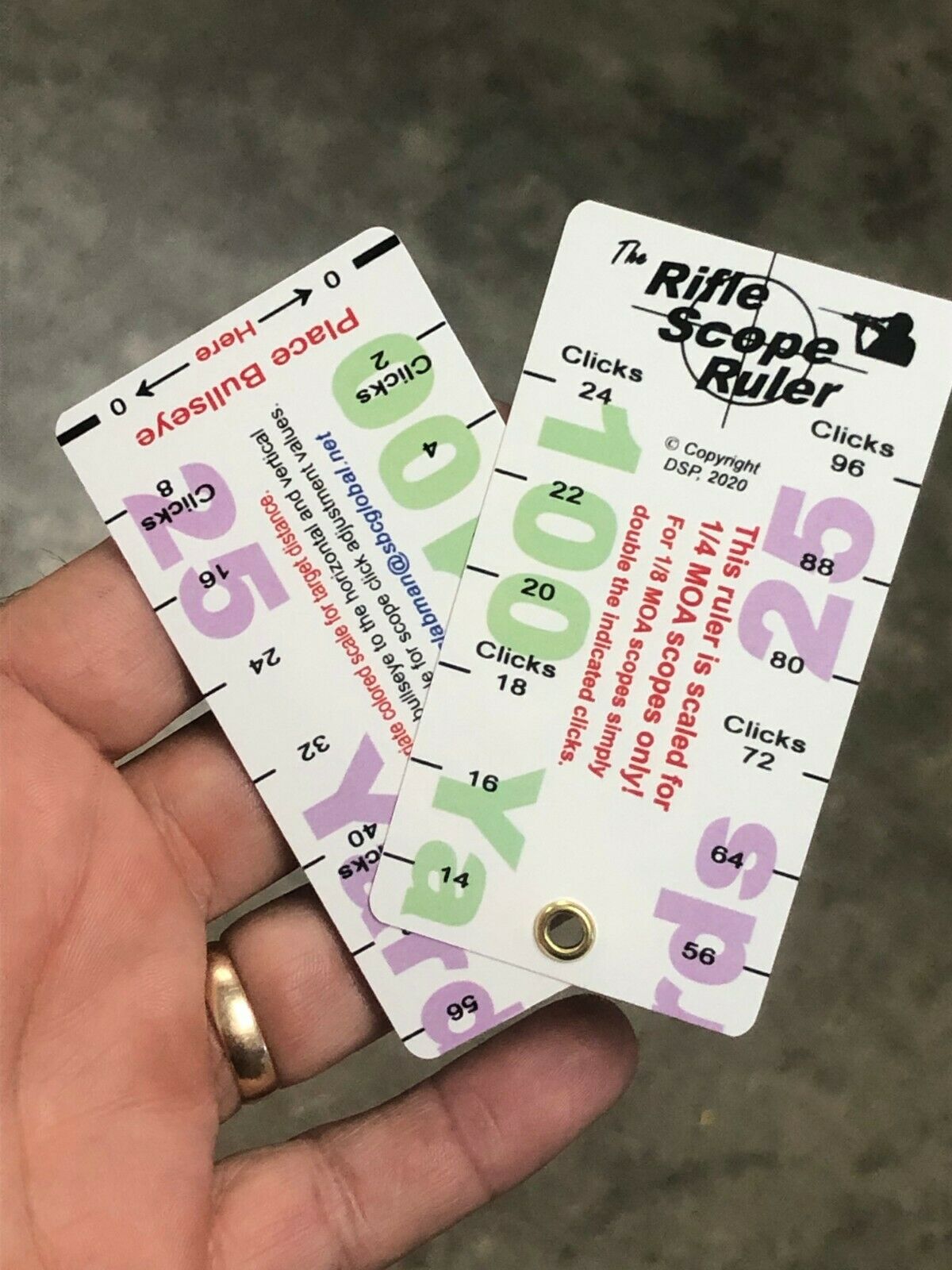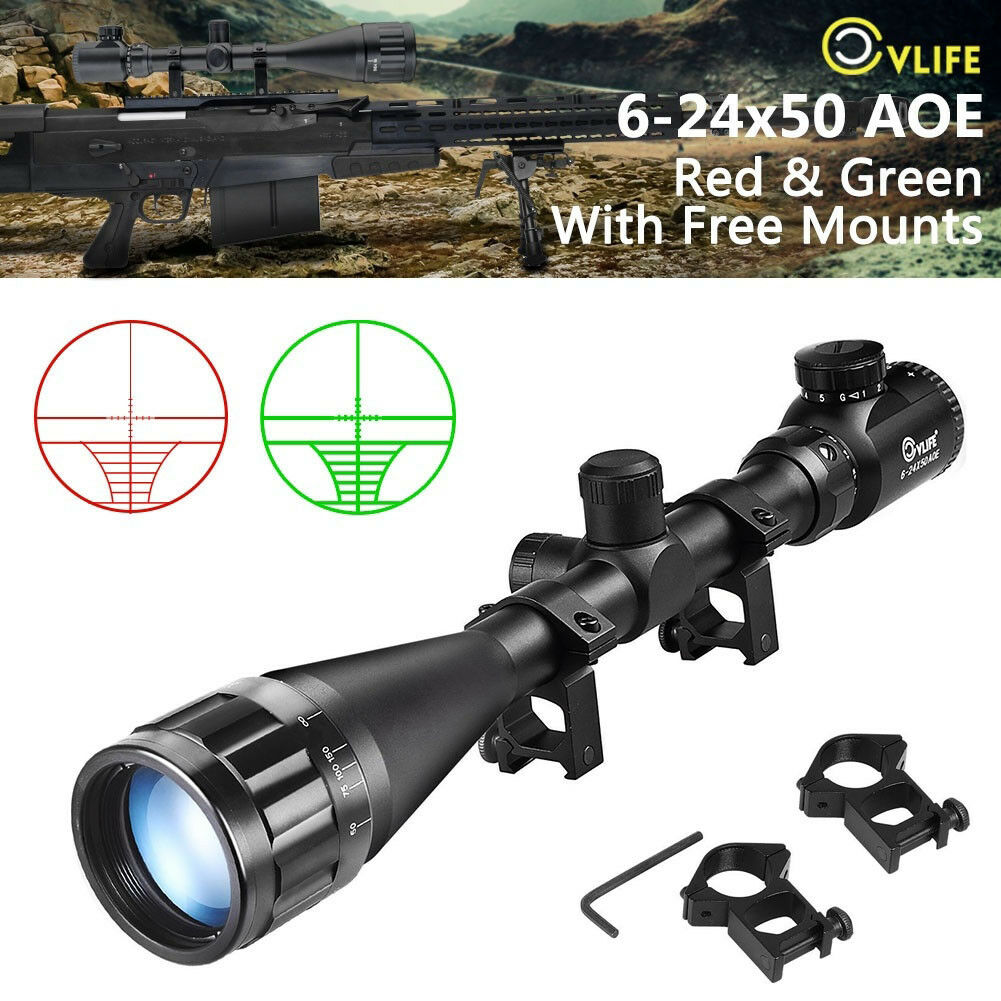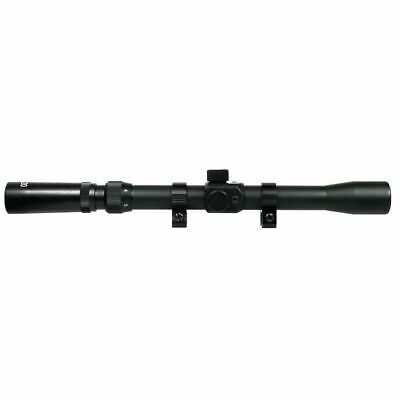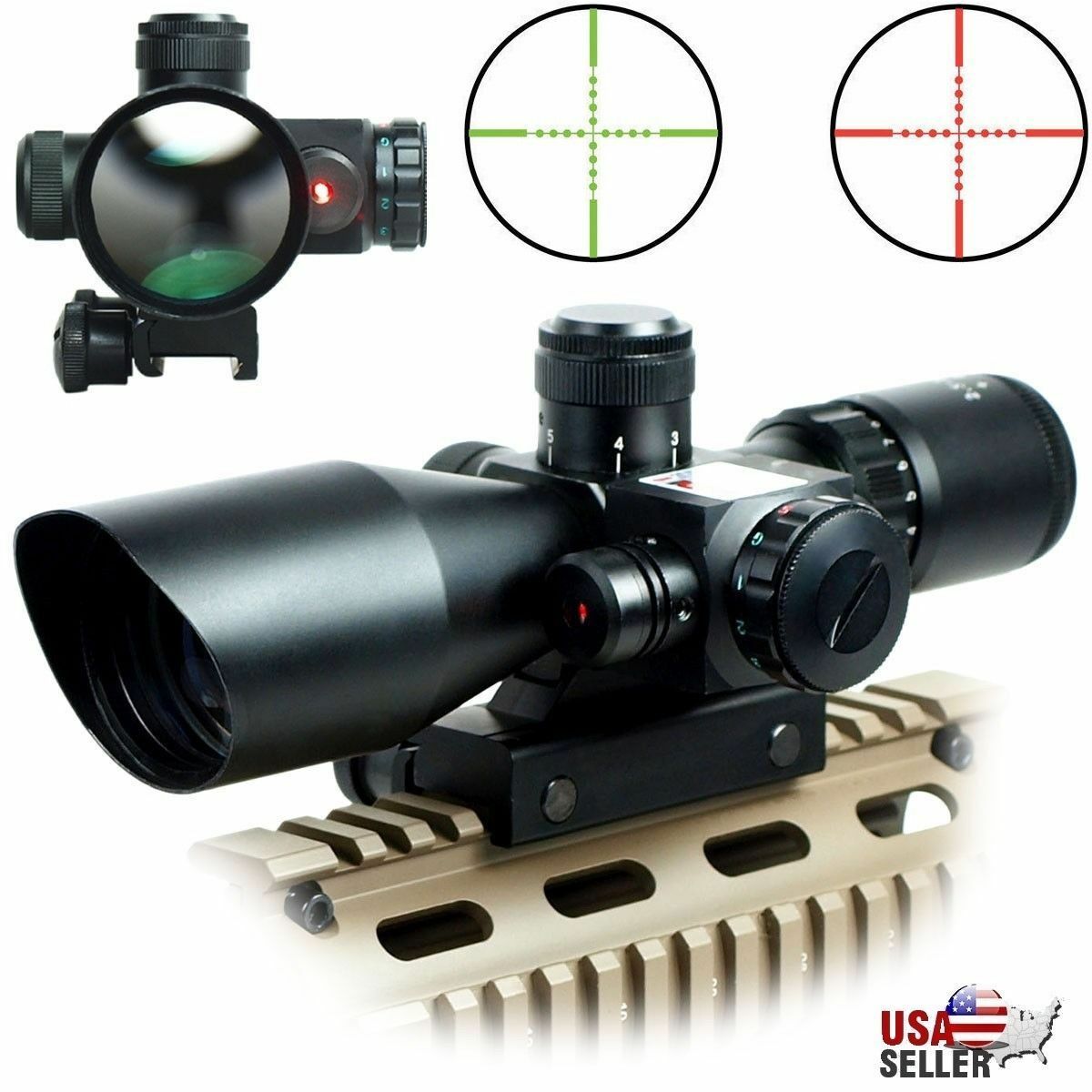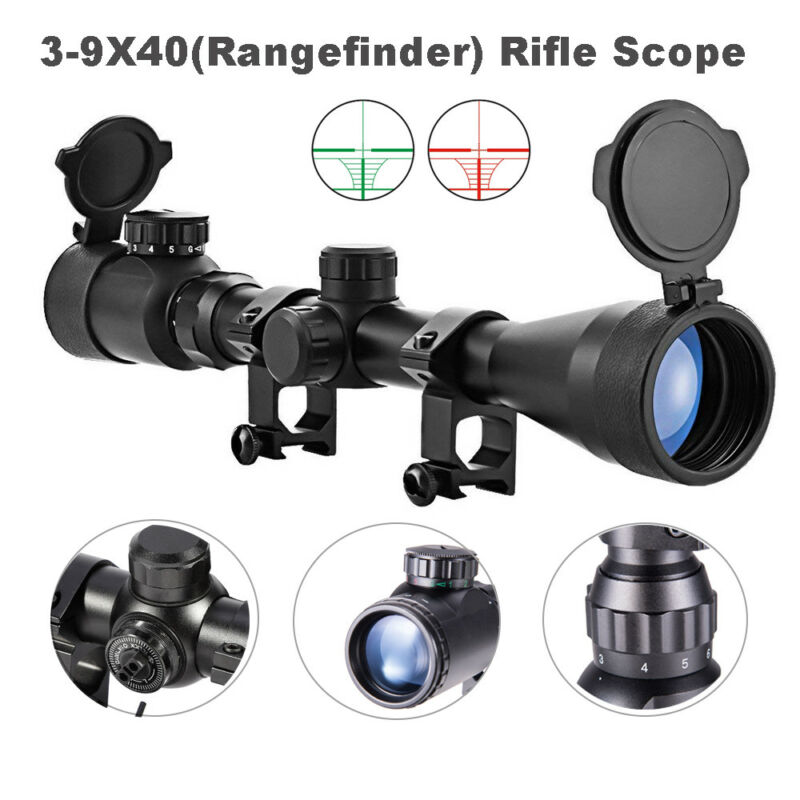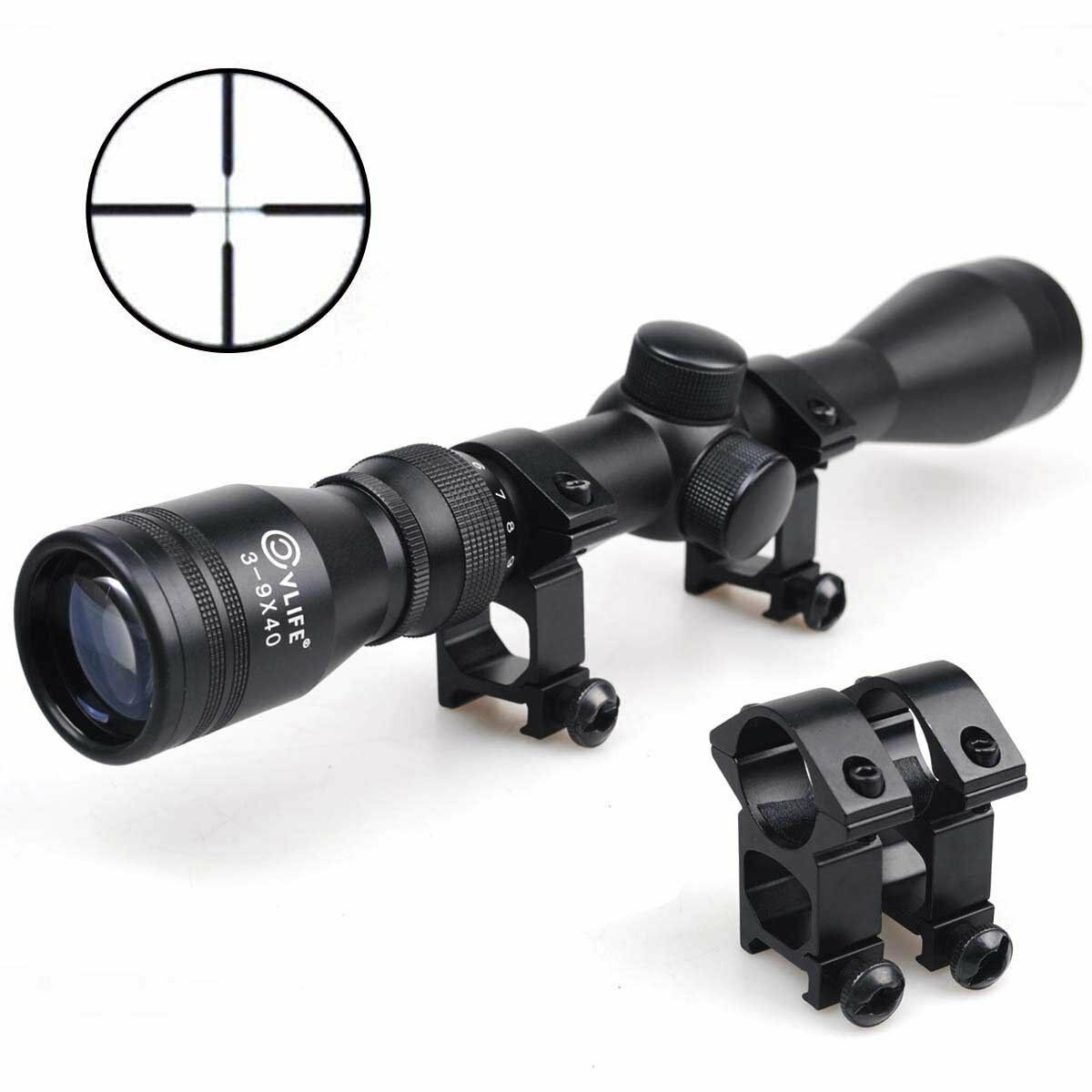-40%
Vortex Optics Crossfire II Rifle Scope SFP with 30mm tube
$ 157.87
- Description
- Size Guide
Description
FREE Vortex Optics Hunter Rings (.99 value) + FREE Vortex Optics Trucker Hat (.99 value) with Purchase!Specifically designed for discriminating hunters and shooters, the Crossfire II series of riflescopes offer the highest levels of performance and reliability. With long eye relief, a fast-focus eyepiece, fully multi-coated lenses and resettable MOA turrets, there's no compromising on the Crossfire II. Clear, tough and bright, this riflescope hands other riflescopes their hat. The hard anodized single-piece aircraft-grade aluminum tube is nitrogen purged and o-ring sealed for waterproof and fogproof performance.
Dual use for Shooting Tactical/Hunting.
V-Brite Illuminated MOA Reticle (CF2-31037 1-4x24mm & CF2-31049 3-12x56mm)
Uses the V-Plex format along with battery-powered electronics to illuminate the center dot for better low-light performance. Good for hunters/shooters during extra-low light conditions.
Second focal plane (SFP) reticles are located near the scope’s eyepiece behind the image erecting and magnifying lenses. This style of reticle does not visually change in size when you change the magnification. The advantage of an SFP reticle is that it always maintains the same appearance. Listed reticle subtensions used for estimating range, holdover, and wind drift correction are only accurate at one particular magnification.
Dead-Hold BDC MOA Reticle (CF2-31039 4-16x50mm & CF2-31045 6-24x50mm)
Customized hashmark design helps eliminate guesswork on holdover and windage corrections. Good for hunting/shooting at varying ranges where estimating holdover is a concern.
Second focal plane (SFP) reticles are located near the scope’s eyepiece behind the image erecting and magnifying lenses. This style of reticle does not visually change in size when you change the magnification. The advantage of an SFP reticle is that it always maintains the same appearance. Listed reticle subtensions used for estimating range, holdover, and wind drift correction are only accurate at one particular magnification.
